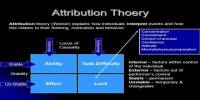Because genetic forms of blindness vary so much, developing medicines for them is extremely difficult. However, researchers from Trinity College Dublin have identified a target that shows significant promise for treating a variety of these disorders.
The researchers discovered that a specific gene (SARM1) is a critical driver in the damage that leads to poor vision (and occasionally blindness), and that deleting this gene preserves eyesight when a chemical triggers a chain of failure that mimics a variety of ocular diseases in a disease model.
This suggests that medications that target SARM1 activity may hold the key to effective novel treatments for a variety of disorders that can have a catastrophic impact on quality of life and for which there are presently no effective treatments.
Near or far vision impairment affects at least 2.2 billion individuals worldwide. Vision impairment may have been avoided or remedied in at least 1 billion, or nearly half of these cases. Uncorrected refractive errors and cataracts are the major causes of visual impairment and blindness.
The researchers published their findings in the International Journal of Molecular Sciences, lead by a team from Trinity’s School of Genetics and Microbiology.
Another important finding was that visual function was still preserved when reassessed four months after SARM1 was deleted, indicating that the benefits can remain over time. This raises hopes that a targeted therapy delivered early enough may offer people diagnosed with an ocular neuropathy long-lasting preservation of sight.
Jane Farrar
First author on the paper, Laura Finnegan, a Ph.D. Candidate at Trinity said:
“In response to injury SARM1 contributes to a process that leads to the degeneration of specialized cells and their axons in the eye. When this happens it essentially means that the optic nerve can no longer deliver signals from the eye to the brain.”
“Impaired vision and blindness is extremely debilitating for millions of people across the globe, which is one of the main motivations for us to seek to better understand the genetic causes and, potentially, develop life-changing therapies.”
Jane Farrar, Professor in Trinity’s School of Genetics and Microbiology, senior author on the paper, said:
“Another important finding was that visual function was still preserved when reassessed four months after SARM1 was deleted, indicating that the benefits can remain over time. This raises hopes that a targeted therapy delivered early enough may offer people diagnosed with an ocular neuropathy long-lasting preservation of sight.”
“We have a way to go before such a therapy is available but this work represents a significant step, sheds light on the pathway forward and offers hope that a range of diseases involving the optic nerve from maternally inherited conditions such as Leber Hereditary Optic Neuropathy to the more commonly known glaucoma will one day be treatable via such therapies.”
Professor Farrar’s group at the School of Genetics and Microbiology collaborated with Professor Andrew Bowie’s lab in the Trinity Biomedical Sciences Institute’s School of Biochemistry and Immunology on the study.
The Irish Research Council, Science Foundation Ireland, the Health Research Board of Ireland, and Fighting Blindness Ireland all contributed to the project.
















